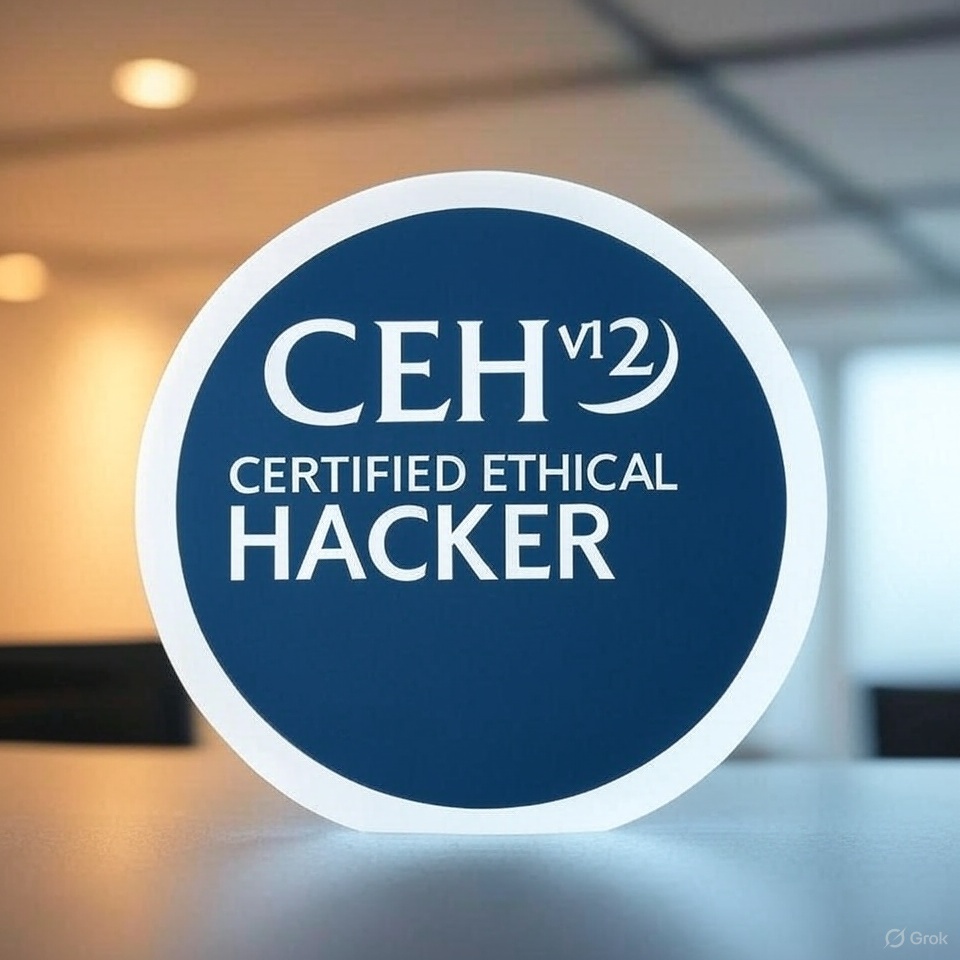
Certified Ethical Hacker (CEH v12)
Course Description
Description
The CEH v12 Certified Ethical Hacker course equips learners with the skills to legally identify, exploit, and report system vulnerabilities, using the same tools and techniques as malicious hackers—but ethically. This course follows the latest EC-Council CEH v12 blueprint, emphasizing hands-on practice, MITRE ATT&CK Framework, and real-world attack simulations across modern networks, cloud, and web applications.
Designed for 2025 job roles, this self-paced course prepares students to pass the CEH certification exam while also making them industry-ready for roles like Penetration Tester, Security Analyst, and SOC Engineer.
What You Will Learn
-
Understand the principles of ethical hacking and cybersecurity
-
Work through all 5 phases of hacking: Reconnaissance, Scanning, Gaining Access, Maintaining Access, and Covering Tracks
-
Conduct vulnerability assessment, exploit weaknesses, and patch security holes
-
Identify malware types: viruses, worms, Trojans, ransomware
-
Perform network scanning, sniffing, and session hijacking
-
Hack web applications and web servers using real-world techniques
-
Execute SQL injection, XSS, and code injection attacks
-
Perform wireless and mobile hacking assessments
-
Use modern tools like Nmap, Metasploit, Wireshark, Burp Suite, John the Ripper, Nikto
-
Prepare for the CEH exam with mock tests and lab simulations
-
Understand cloud security, cryptography, social engineering, and incident handling
Course Curriculum
-
Introduction to Ethical Hacking
-
What is Ethical Hacking?
-
Legal aspects, certifications, and industry standards
-
Overview of hacker types and attack surfaces
-
-
Footprinting & Reconnaissance
-
Passive vs active reconnaissance
-
WHOIS, Google dorking, DNS enumeration
-
Tools: Recon-ng, Maltego, Shodan
-
-
Scanning Networks
-
Nmap, Netcat, and vulnerability scanning
-
Identifying open ports, services, and OS fingerprinting
-
-
Enumeration
-
Banner grabbing, NetBIOS enumeration
-
SMB, SNMP, LDAP, and RPC techniques
-
-
Vulnerability Assessment
-
CVEs, CVSS scoring
-
Nessus, OpenVAS, Nikto
-
Identifying misconfigurations
-
-
System Hacking
-
Password cracking and privilege escalation
-
Keylogging, trojans, and backdoors
-
Hiding files and covering tracks
-
-
Malware Threats
-
Types of malware
-
Detection and analysis
-
Labs: creating and detecting payloads
-
-
Sniffing & Social Engineering
-
Packet capturing, ARP poisoning, MITM attacks
-
Social engineering tactics: phishing, baiting, pretexting
-
-
Denial of Service (DoS/DDoS)
-
Types and impact
-
Tools: LOIC, HOIC, Hping
-
-
Session Hijacking & Evading Defenses
-
TCP hijacking, token theft
-
IDS/IPS evasion, obfuscation techniques
-
-
Hacking Web Servers & Web Applications
-
Directory traversal, buffer overflow
-
OWASP Top 10: XSS, SQLi, CSRF, RCE
-
Tools: Burp Suite, OWASP ZAP
-
-
Wireless & Mobile Hacking
-
WEP/WPA/WPA2 cracking
-
Android/iOS hacking basics
-
Spyware detection
-
-
Cloud Security & IoT Hacking
-
Cloud attack vectors (SaaS, IaaS, PaaS)
-
Securing APIs and cloud workloads
-
IoT architecture threats
-
-
Cryptography & Security Controls
-
Symmetric & asymmetric encryption
-
Hashing algorithms, digital signatures
-
VPNs and secure tunnels
-
-
Penetration Testing & Reporting
-
Phases of a penetration test
-
Rules of engagement, documentation
-
CEH lab-based assessment practice
-

Chronolearn
DeveloperI am a web developer with a vast array of knowledge in many different front end and back end languages, responsive frameworks, databases, and best code practices
| Title | From Date | To Date | Cost |
|---|---|---|---|
| No data found! | |||





